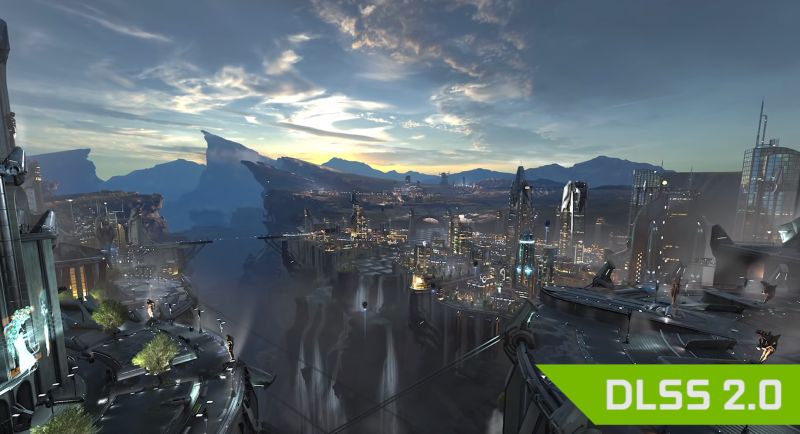It’s been close to two years since NVIDIA introduced its Deep Learning Super Sampling (DLSS) as one of the core features for its GeForce RTX series graphics cards, albeit with with mixed reception. Today, the GPU maker announced the 2nd generation of its anti-aliasing technology, DLSS 2.0.
At its core, DLSS 2.0 still utilises the on-board Tensor cores of the GeForce RTX series cards, just obviously with better efficiency and execution than its predecessor. To be clear, the algorithm still employs the use of machine learning. In order to make a game look as though it is running at 4K resolution, when in fact, the game is actually rendering details at a resolution considerably lower than that (in this case, Full HD or 1440p).

For DLSS 2.0, the improvements go beyond improved processing and provides GeForce RTX owners with the option to set the feature’s preset levels. Specifically, users will be able to choose between Quality, Balanced, and Performance mode. In Quality mode, DLSS 2.0 will upscale the resolution quality from a 1440p frame and upscale it all the way to 4K resolution. For Performance mode, that upscaling process starts from Full HD instead.
The crucial point to DLSS 2.0 is, like its predecessor, a 4K display isn’t necessarily require to enjoy the upscaling benefits. Fact is, you can still use the feature on a Full HD or 1440p display, and the end results would still look better than the game’s native rendering at those resolutions.
At the time of writing, NVIDIA has yet to roll out the driver update that will bring DLSS 2.0 to all GeForce RTX cards. Upon availability, MechWarrior 5: Mercenaries and Control will be the first two titles to gain access to the updated feature.
(Source: NVIDIA via YouTube, Venture Beat)
Follow us on Instagram, Facebook, Twitter or Telegram for more updates and breaking news.



